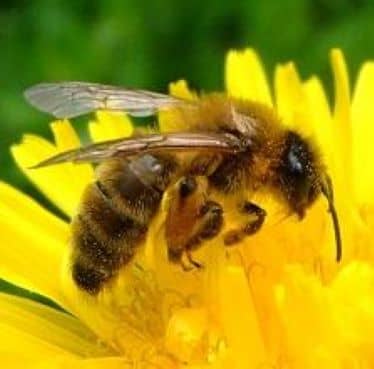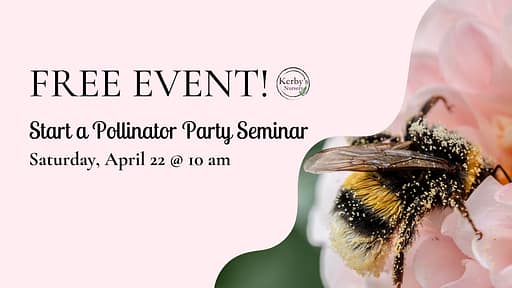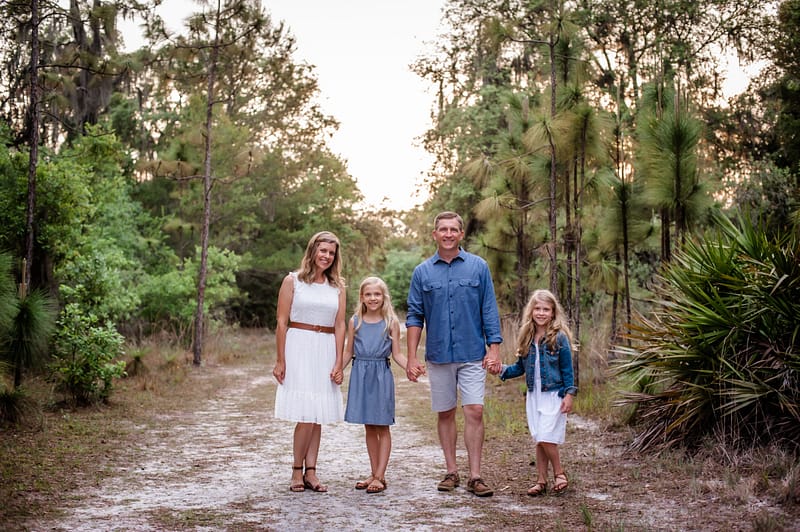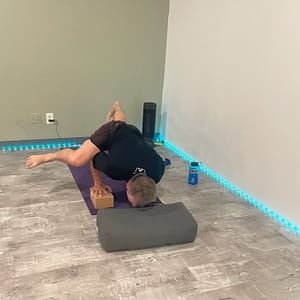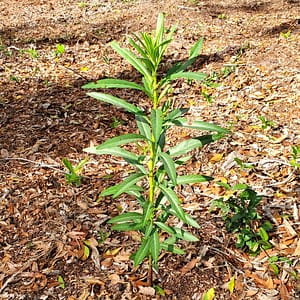Since you are reading a newsletter entitled Life Lived Outside, it’s safe to say that you love the outdoors. You love your garden and love being outside among plants and wildlife. But sometimes in our world today, people view nature as something that we are apart from. Something that is out there and that you have to get in the car and drive to find: a beautiful park, towering mountains, a cascading waterfall, or wildflowers in a meadow. In our urban environments we forget that we do and should coexist with nature.
With Earth Day this weekend, it seemed like a great time to talk about the importance of nature in creating a healthy environment, and, as a fundamental piece of a healthy environment, the importance of the pollinators that call it home.

Usually, when it comes to pollinators, we focus on how critical they are for the food that we eat. Up to one in three bites of food that we eat is due to animal pollinators. And for certain varieties of our favorite crops, like apples, mangos, and squash, pollinators are vital for fruit production. But beyond just food crops, the flowering plants, shrubs, and trees that call Florida home also rely on pollinators for reproduction. Up to 75% of all flowering plants are able to produce seed because of pollinators. So not only are pollinators important for food production, without them our natural environment wouldn’t have the diversity of plants that we enjoy in Florida (which means “Full of Flowers” in Spanish, the name given to our state by Ponce de Leon in 1513!).

It’s probably obvious that urban development across the globe and here at home is hurting pollinator populations. From butterflies to bees, habitats are being lost and not replaced. And here is where you come in. It’s time to start a party. A pollinator party. Right in your own backyard. This Saturday at 10am, I’m hosting our first ever Start a Pollinator Party seminar, where we’ll take a deeper dive into why pollination is important, what it means for biodiversity and Mother Earth, and how we can plant (especially natives) to attract and create habitats for the pollinators that call Florida home. Together we can be a part of creating a healthy environment for our community.
One way to promote biodiversity that we are super-excited about is through planting and growing Florida native plants in our home gardens. We have been inspired by the Homegrown National Park® movement, cofounded by Doug Tallamy and Michelle Alfandari, which has as its goal to create “20 million acres of native plantings in the U.S.”1 Tallamy, an entomologist and professor of agriculture at the University of Delaware, recognized that wildlife populations are declining due to the disappearance of native plants to support their habitats. His solution is to plant more natives. His book, Nature’s Best Hope, demonstrates how homeowners can turn their gardens and yards into “conservation corridors” that serve as natural environments for wildlife, thus creating “homegrown national parks.”2 What I really love about this movement is that it recognizes that we still want our gardens to be beautiful and usable and promotes ways that we can include new native plantings and shrink our lawns, while still enjoying areas to play and picnic. We’ll talk more about Homegrown National Park at the seminar, and while you are here for a visit, check out our contribution to the cause. Kerby’s is now “on the map” with a 1500-square foot area that we’ve dedicated to native plantings to give you an idea of how you can include these important flowers, shrubs, and trees in your landscape. Come check it out when you stop by the nursery.
1 ABOUT US — HOMEGROWN NATIONAL PARK
2TALLAMY’S HUB — HOMEGROWN NATIONAL PARK
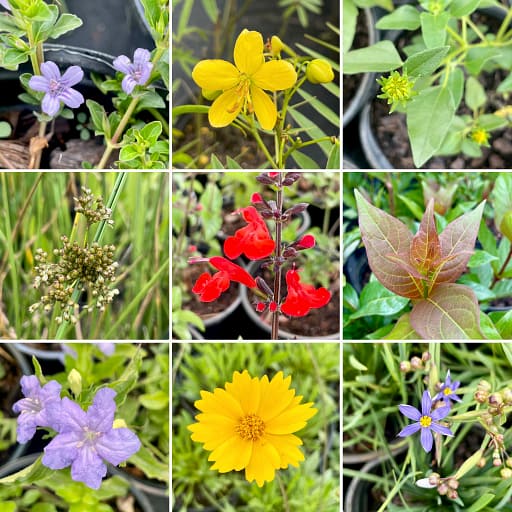
I can’t wait to see you this Saturday. It will be fun to talk natives, pollinators, and parks, all things that make up our amazing Life Lived Outside.
And here are some resources you may be interested in:
10 Things to Get You Started / Doug Tallamy — HOMEGROWN NATIONAL PARK
Bette S. Walker Discovery Garden – UF/IFAS Extension (ufl.edu)

